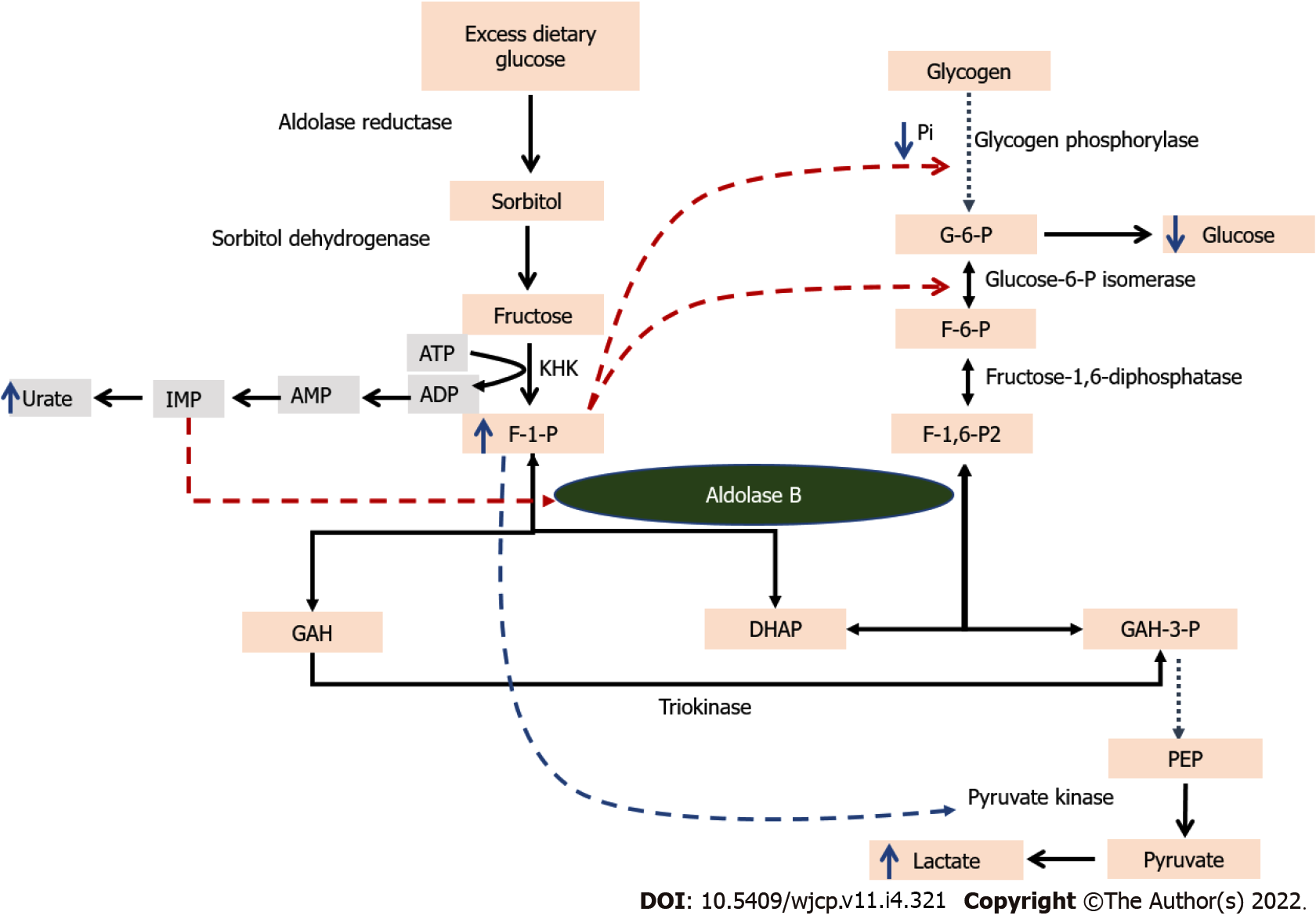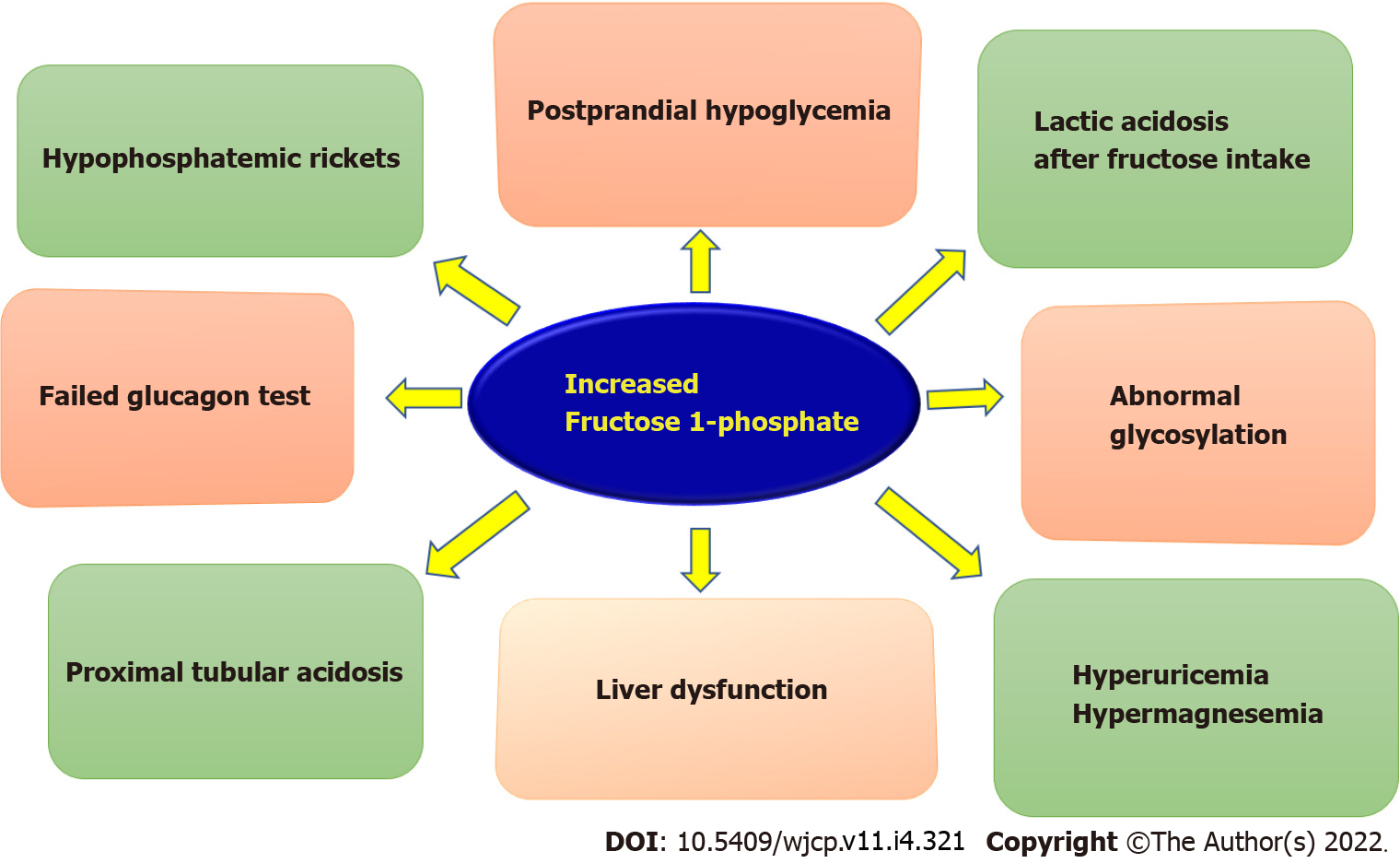Copyright
©The Author(s) 2022.
World J Clin Pediatr. Jul 9, 2022; 11(4): 321-329
Published online Jul 9, 2022. doi: 10.5409/wjcp.v11.i4.321
Published online Jul 9, 2022. doi: 10.5409/wjcp.v11.i4.321
Figure 1 Illustrates the pathway of fructose metabolism.
Fructose is converted by ketohexokinase to F-1P that acts as substrate for Aldolase B which forms dihydroxyacetone phosphate (DHAP) and glyceraldehyde (GAH) that enter the glycolytic/gluconeogenic pathways. Aldolase B also catalyzes the reversible conversion of F-1,6P2 to DHAP and GAH-3P. Accumulation of F-1P leads to inhibition of glucose -6 P isomerase and along with depletion of inorganic phosphate, inhibits glycogen phosphorylase (red broken line). Similarly, increased IMP inhibits any residual Aldolase B activity if present. F-1P also activated PK which promotes lactic acid production. ADP: Adenosine diphosphate; AMP: adenosine monophosphate; ATP: adenosine triphosphate; DHAP: dihydroxyacetone phosphate; F-6P: Fructose 6-phosphate; F-1P: Fructose 1-phosphate; F-1,6-P2: Fructose 1,6-biphosphate; G-6P: glucose 6-phosphate, GAH glyceraldehyde; GAH-3P: Glyceraldehyde 3-phosphate; IMP: inosine monophosphate; KHK: Ketohexokinase; PEP: Phosphoenolpyruvate; Pi: Inorganic phosphate; PK: Pyruvate kinase.
Figure 2
Illustrates the consequences of hereditary fructose intolerance.
- Citation: Singh SK, Sarma MS. Hereditary fructose intolerance: A comprehensive review. World J Clin Pediatr 2022; 11(4): 321-329
- URL: https://www.wjgnet.com/2219-2808/full/v11/i4/321.htm
- DOI: https://dx.doi.org/10.5409/wjcp.v11.i4.321










